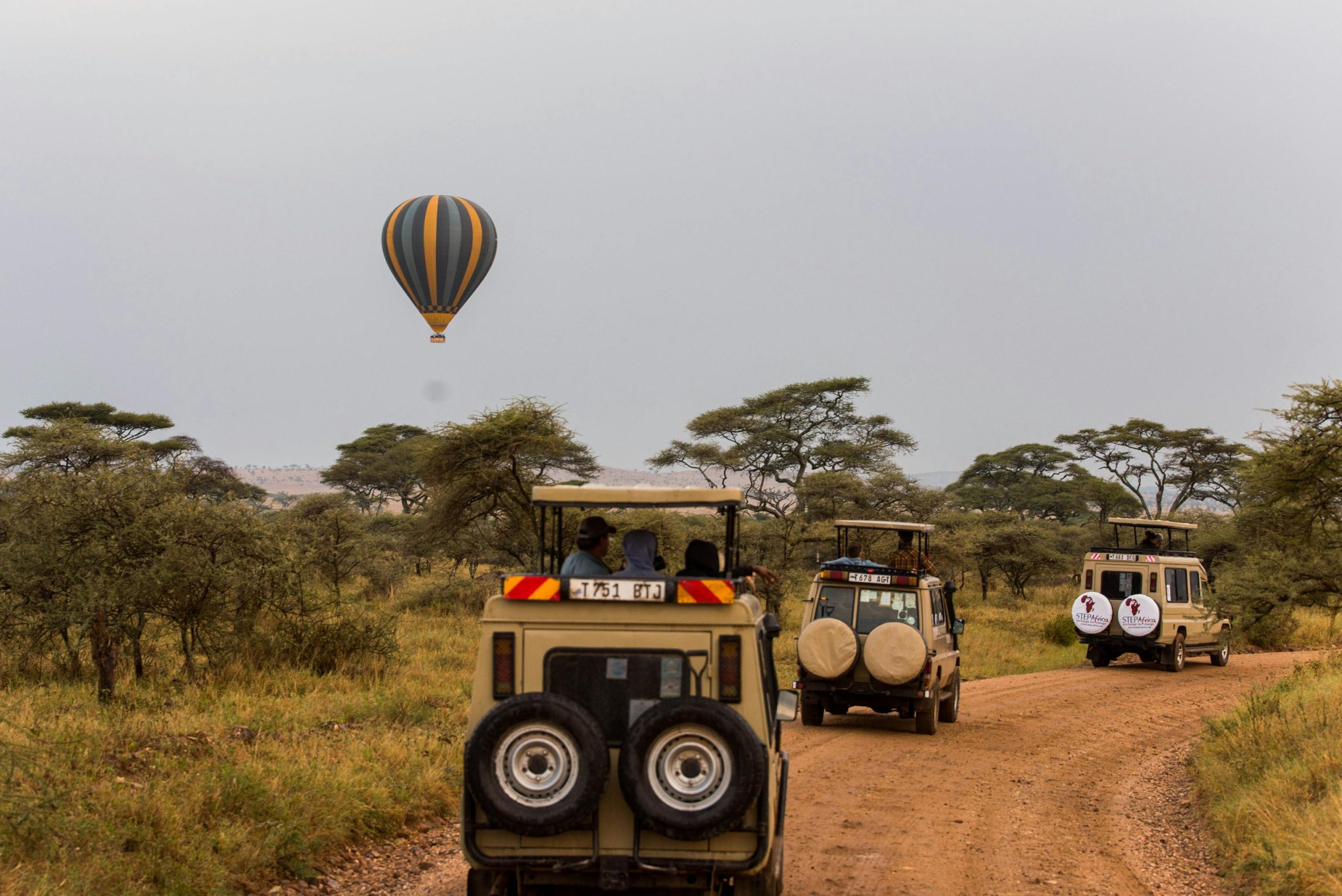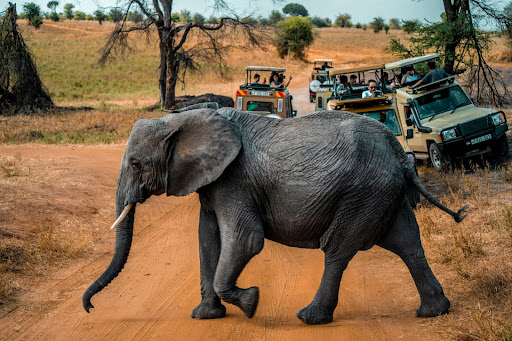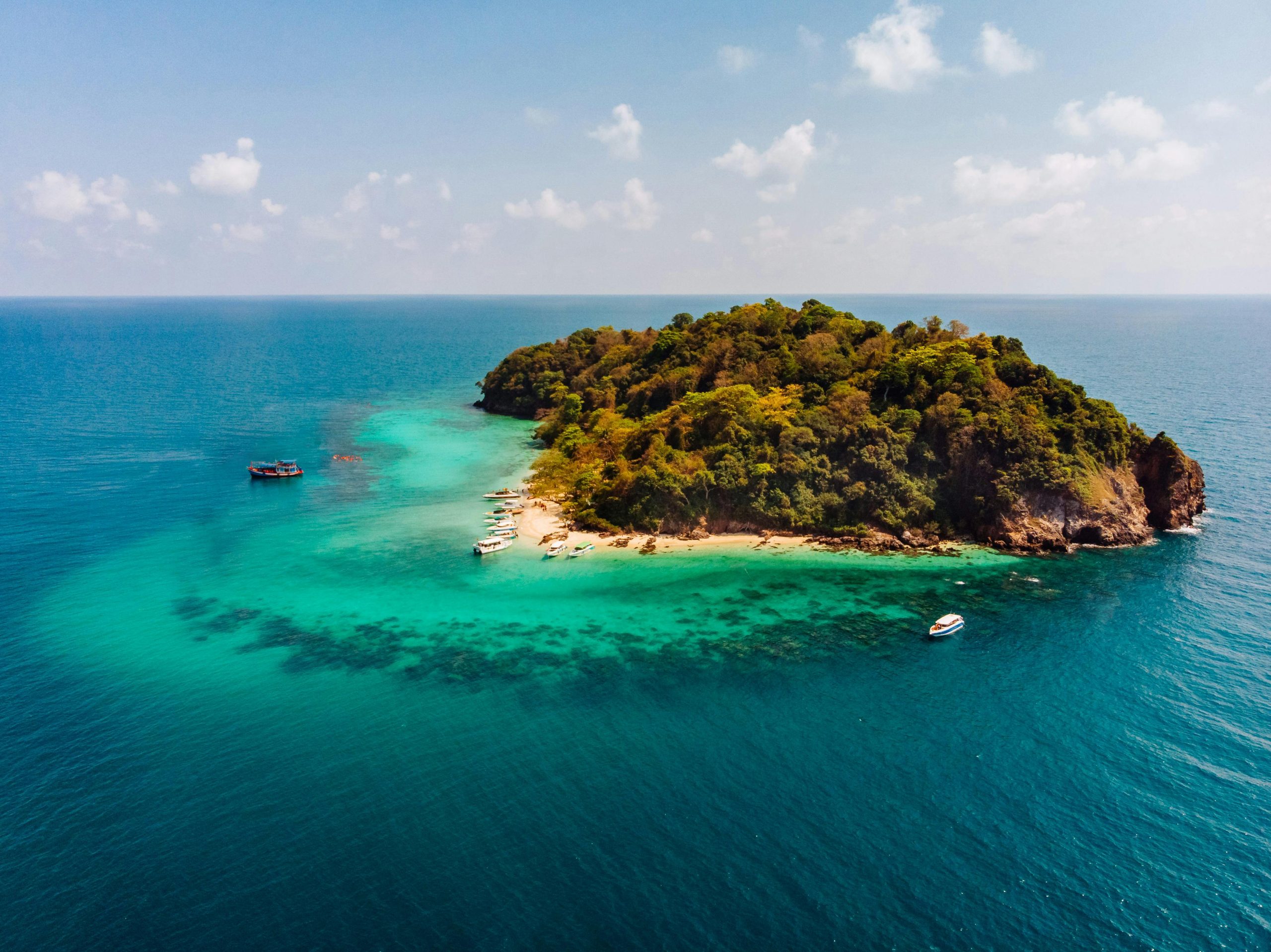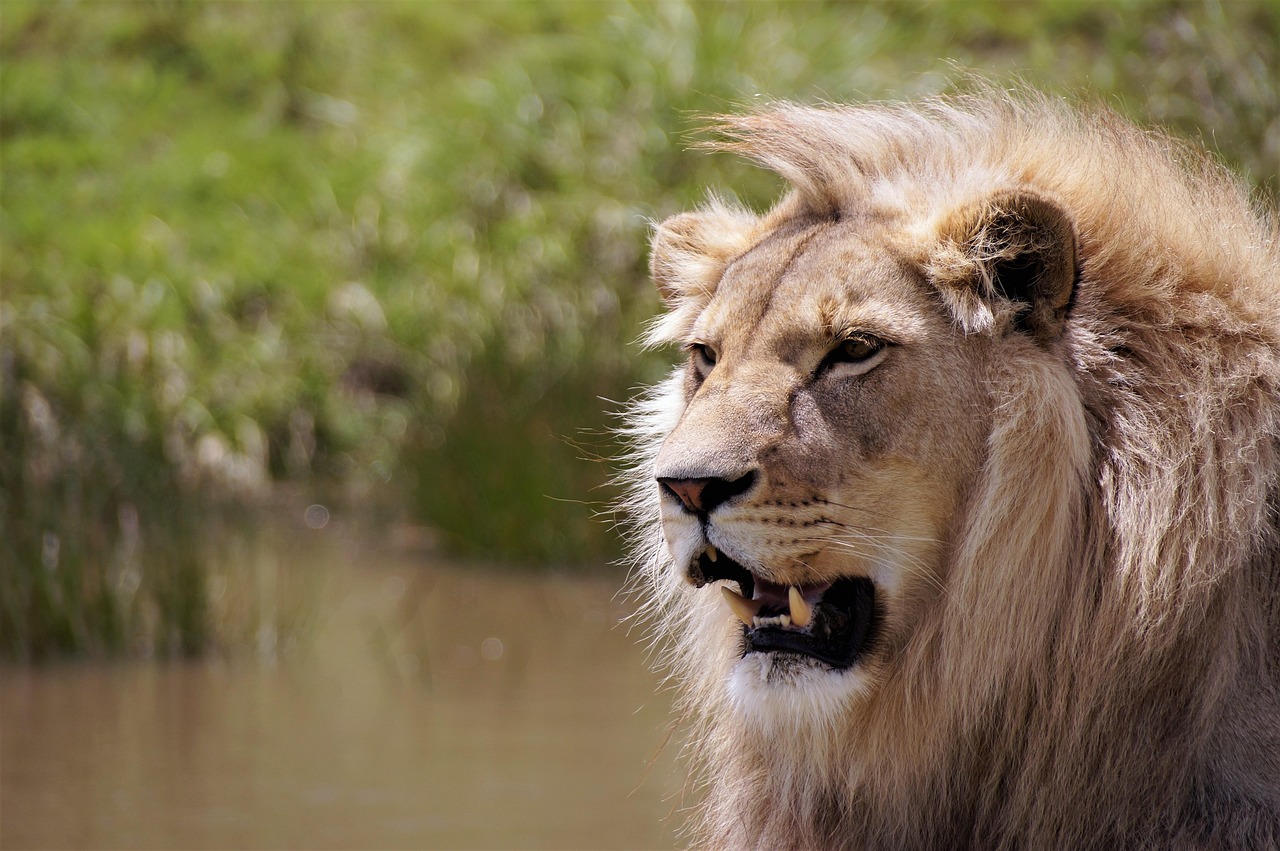Where to Start, Where to Go, and What to See
There’s something utterly transformative about an African safari. The golden light of dawn spilling over the savanna, the distant roar of a lion echoing through the bush, the silent grace of a giraffe nibbling on acacia leaves. It’s a world where nature writes its own epic, and you’re invited to witness it.
But planning a safari can feel overwhelming. Where do you even begin? With so many countries, parks, and experiences to choose from, how do you craft the perfect adventure? That’s where this guide comes in. Whether you’re dreaming of the Great Migration in Tanzania, tracking gorillas in Uganda, or cruising the Okavango Delta in Botswana, we’ll take you step by step through the ultimate safari journey, from choosing your first destination to spotting the Big Five and beyond.
This is a curated expedition through Africa’s most breathtaking landscapes and wildlife encounters. So, grab your binoculars and your sense of adventure. We’re going on safari.
1. Start Here: Maasai Mara, Kenya
If you’re new to safaris, the Maasai Mara National Reserve in Kenya is the perfect introduction. This is the Africa of postcards and documentaries, vast golden plains dotted with acacia trees, thunderous herds of wildebeest, and predators lurking in the tall grass.
Why the Maasai Mara?
→The Great Migration (July–October): Witness one of nature’s greatest spectacles as over a million wildebeest, zebras, and gazelles cross the Mara River, braving crocodile-infested waters.
→Year-Round Big Five Sightings: Lions, leopards, elephants, buffalo, and rhinos thrive here, making it one of the best places for reliable wildlife encounters.
→Cultural Immersion: Visit a Maasai village to learn about this iconic tribe’s traditions, from warrior jumps to beadwork.
Must-Do Experiences
→Hot Air Balloon Safari: Drift silently over the plains at sunrise, followed by a champagne breakfast in the bush.
→Game Drives at Dawn & Dusk: When predators are most active.
→Stay in a Luxury Tented Camp: Fall asleep to the sounds of hyenas whooping and lions roaring (safely, of course).
Pro Tip:
While the Mara is incredible year-round, visiting during the dry season (June to October) ensures optimal wildlife viewing. If you prefer fewer crowds, consider the shoulder seasons (November or February–March).
2. Cross into Tanzania: Serengeti & Ngorongoro Crater
A short hop (or a scenic drive) south from the Maasai Mara brings you to Tanzania’s crown jewels: the Serengeti and the Ngorongoro Crater. This is where the drama of the Great Migration unfolds on an even grander scale, and where wildlife thrives in one of the most concentrated ecosystems on Earth.
Why the Serengeti & Ngorongoro?
The Great Migration’s Stage: The Serengeti is the main arena for the wildebeest migration, with different acts playing out across the seasons, calving in the south (February), river crossings in the north (July–September), and sweeping plains all year.
Ngorongoro’s Natural Wonder: A UNESCO-listed volcanic caldera teeming with wildlife, including one of Africa’s highest densities of lions and the elusive black rhino.
Endless Horizons: The Serengeti’s name means “endless plains” in Maasai, and the landscape delivers, golden grasslands stretch as far as the eye can see, interrupted only by dramatic kopjes (rock formations) where leopards laze.
Must-Do Experiences
→Follow the Migration: Time your visit based on where the herds are (ask your guide for seasonal hotspots).
→Crater Floor Game Drive: Descend into Ngorongoro for a surreal safari where animals roam freely in a 260 sq km natural enclosure.
→Walking Safari in the Seronera Valley: Step out of the vehicle and experience the bush on foot with an armed guide.
→Stay Under the Stars: Book a mobile tented camp that moves with the migration for front-row seats to nature’s greatest show.
Pro Tip:
While the Serengeti is vast, the central Seronera region offers year-round wildlife, making it a safe bet if you’re not chasing the migration. For a more exclusive experience, explore the remote Western Corridor or Lobo area.
3. Into the Wilds of Uganda or Rwanda: Gorilla Trekking
After the sweeping savannas of Kenya and Tanzania, it’s time to shift gears (literally) as we trade open jeeps for muddy hiking boots and venture into the misty rainforests of Uganda and Rwanda. This is where safari meets adventure, and the reward is one of wildlife’s most profound encounters: standing mere feet from a wild mountain gorilla.
Why Gorilla Trekking?
→A Once-in-a-Lifetime Experience: Fewer than 1,000 mountain gorillas remain in the wild, making this one of the rarest wildlife encounters on Earth.
→Intimate and Moving: Unlike the distant sightings of a lion pride, gorilla trekking brings you into the heart of a family’s daily life; watch infants play, silverbacks groom, and mothers nurse their young.
→Beyond Gorillas: These regions also offer golden monkey tracking, chimpanzee treks, and lush landscapes straight from a fairy tale.
Where to Go: Uganda vs. Rwanda
Uganda (Bwindi Impenetrable Forest)
- More affordable permits than Rwanda.
- Varied terrain; treks can range from 1 hour to a full day, depending on the gorilla family’s location.
- Combines well with chimpanzee trekking in Kibale Forest or savanna safaris in Queen Elizabeth National Park.
Rwanda (Volcanoes National Park)
- Easier access (just a 2-hour drive from Kigali).
- Generally shorter, less strenuous treks due to the gorillas’ higher elevation habitat.
- A chance to add poignant cultural experiences, like visiting the Kigali Genocide Memorial.
Must-Do Experiences
→Dawn Trekking: Set out early when the forest is alive with birdsong and the mist still clings to the trees.
→Hire a Porter: For $20, they’ll carry your pack and help you navigate slippery trails, worth every penny.
→Stay Nearby: Lodges like Uganda’s Clouds Mountain Gorilla Lodge or Rwanda’s Bisate Lodge blend luxury with breathtaking views.
Pro Tip:
Permits sell out months in advance, especially for Rwanda’s dry seasons (June–September and December–February). Book early and consider Uganda if you’re on a tighter budget or want a longer, more immersive trek.
4. A Southern Detour: The Okavango Delta, Botswana
Leaving behind the rainforests of Central Africa, we enter a world where waterways replace roads and the rhythm of life follows the ebb and flow of floodwaters. Welcome to Botswana’s Okavango Delta, a UNESCO World Heritage Site where the Kalahari Desert meets an inland oasis, creating one of the planet’s most unique ecosystems.
Why the Okavango Delta?
→A Water-Based Safari: Unlike the savannas of East Africa, here you’ll glide silently in a mokoro (traditional dugout canoe) past elephants wading through lily-covered channels.
→Exclusive Wilderness: With limited tourism and high-end, low-impact lodges, the Delta offers an uncrowded, intimate safari experience.
→Predator Paradise: The floodplains attract lions, leopards, and the elusive African wild dog, while hippos and crocodiles rule the waterways.
Choosing Your Base
Moremi Game Reserve (Eastern Delta)
→The only formal reserve within the Delta, offering both land and water-based activities.
→Ideal for first-time visitors, with reliable game viewing year-round.
Private Concessions (Outer Delta)
→Exclusive, crowd-free experiences in remote areas like the Jao or Vumbura reserves.
→Night drives and off-roading are permitted (unlike in national parks).
Must-Do Experiences
→Mokoro Excursion: Let a poler-guide navigate you through narrow channels, where frogs sing and malachite kingfishers dart past.
→Walking Safari: Track wildlife on foot with an armed guide, learning to read the bush like the San people have for millennia.
→Scenic Flight: See the Delta’s labyrinth of waterways from above in a small plane, striking at sunset when the floodplains turn gold.
Pro Tip:
Timing is everything. The annual flood peaks from June–August, transforming the Delta into a watery paradise. For the best of both worlds (water activities and strong land-based game viewing), visit in September–October, when temperatures rise and animals congregate at remaining water sources.
5. Adventure in Namibia: Etosha National Park
From the waterlogged wonderland of the Okavango Delta, we now venture into Namibia’s stark and striking landscapes, where the desert breathes life, not death. Etosha National Park, centered around a vast salt pan so large it’s visible from space, is Namibia’s crowning wildlife destination. Here, the rules of the safari change: waterholes replace rivers, and the animals come to you.
Why Etosha?
→Desert-Adapted Wildlife: This is one of the few places to see lions, elephants, and rhinos thriving in near-desert conditions. The famous black rhino sightings are among the best in Africa.
→Waterhole Drama: Unlike traditional game drives, Etosha lets you park at a floodlit waterhole at night and watch as elephants, giraffes, and predators take turns under the stars.
→Stark, Surreal Beauty: The blinding white expanse of the Etosha Pan creates a dreamlike backdrop for wildlife photography.
Key Areas of the Park
- Okaukuejo
→ Home to the most famous waterhole, where black rhinos are frequently seen at night.
→Offers a range of accommodations, from campsites to comfortable lodges.
- Halali
→Central location with a productive waterhole and excellent mid-day wildlife activity.
→Known for leopard sightings in the surrounding mopane woodlands.
- Namutoni
→Eastern gateway with a historic German fort and open plains favored by cheetahs.
→Less crowded, with good birdwatching opportunities.
Must-Do Experiences
→Self-Driving Safari: Etosha’s well-marked roads and abundant wildlife make it one of Africa’s best parks for independent exploration (just keep an eye on your fuel gauge).
→Nighttime Waterhole Vigil: Grab a chair at Okaukuejo’s floodlit waterhole and watch as the nocturnal shift; hyenas, rhinos, and even lions come to drink.
→Visit in the Dry Season (May–October): When thirsty animals cluster around remaining water sources, turning every waterhole into a theater of survival.
Pro Tip:
Combine Etosha with Namibia’s otherworldly landscapes: the red dunes of Sossusvlei, the shipwrecked coast of the Skeleton Coast, and the tribal cultures of Damaraland. This country rewards those who embrace the road less traveled.
6. Finish in South Africa: Kruger National Park & Beyond
After traversing the wilds of East and Southern Africa, we arrive at our final stop; South Africa’s legendary Kruger National Park. This is where safari dreams become reality with remarkable ease, offering some of the continent’s most accessible yet untamed wildlife experiences. But Kruger is just the beginning. South Africa’s diverse landscapes and world-class infrastructure make it the perfect place to cap off your African adventure.
Why Kruger?
→The Easiest Big Five Destination: Excellent roads, clear signage, and a high density of wildlife mean even first-time visitors can spot lions, leopards, elephants, buffalo, and rhinos with relative ease.
→Flexibility for All Travelers: Choose between self-drive adventures, guided game drives, or luxury private reserves like Sabi Sands, where off-roading guarantees up-close encounters.
→Beyond the Game Drive: Kruger’s wilderness trails, birdwatching (over 500 species!), and archaeological sites add depth to the classic safari experience.
Where to Go in Kruger
- Southern Kruger (Skukuza, Lower Sabie)
→Highest wildlife density, ideal for first-time visitors.
→The Sabie River attracts herds of elephants, hippos, and prolific birdlife.
- Central Kruger (Satara, Olifants)
→Famous for lion prides and vast open plains teeming with grazers.
→The best region for spotting cheetahs.
- Northern Kruger (Pafuri, Shingwedzi)
→Remote and rugged, with baobab-dotted landscapes and rare species like roan and sable antelopes.
→A birder’s paradise, particularly in the lush Pafuri region.
Must-Do Experiences
→Sunrise Game Drive: Dawn is when predators are most active. Listen for the alarm calls of impalas signaling a nearby leopard.
→Bush Walk: Step into the wild on foot with an armed guide, learning to track animals and read the bush’s subtle signs.
→Private Reserve Luxury: Splurge on a stay in Sabi Sands or Timbavati for off-road driving and guaranteed leopard sightings.
Beyond Kruger
South Africa’s diversity shines when paired with:
- Cape Town: Hike Table Mountain, tour vineyards, or meet penguins at Boulders Beach.
- Garden Route: A scenic road trip blending forests, beaches, and charming coastal towns.
- Madikwe Game Reserve: A malaria-free alternative with thriving wild dog packs and luxury lodges.
Pro Tip:
Visit during the dry winter months (May–September) for the best game viewing. If you prefer lush landscapes and fewer crowds, November–April offers dramatic summer storms and newborn animals; just pack rain gear.
7. Bonus: Alternative Routes & Custom Combos
Not every safari follows the classic route. Sometimes the most unforgettable journeys come from unexpected combinations. Whether you’re short on time, craving a niche experience, or looking to blend wildlife with other adventures, these tailored itineraries prove that Africa’s possibilities are endless.
Short & Impactful Combos
- Kenya + Tanzania (The Great Migration Express)
Duration: 10-12 days
Highlights: Witness the Mara River crossings in Kenya’s Maasai Mara, then follow the herds south into Tanzania’s Serengeti. Cap it off with a day in Ngorongoro Crater.
Perfect For: Those who want the migration’s greatest hits without a lengthy trip.
- Botswana + South Africa (Water & Wild Luxury)
Duration: 12-14 days
Highlights: Glide through the Okavango Delta by mokoro, then contrast with Kruger’s land-based game drives. Add Victoria Falls or Cape Town for a grand finale.
Perfect For: Travelers seeking both wetland and bushveld safaris, with a touch of urban sophistication.
- Rwanda + Uganda (Primate Paradise Loop)
Duration: 8-10 days
Highlights: Track gorillas in Rwanda’s Volcanoes National Park, then cross into Uganda for chimpanzee trekking in Kibale Forest and Big Five game drives in Queen Elizabeth National Park.
Perfect For: Wildlife enthusiasts who want intimate primate encounters paired with classic safari action.
Niche Adventures
- Safari by Rail: Rovos Rail
The Experience: Step into the golden age of travel aboard this luxury train, where private suites, fine dining, and open-air observation cars pair with stops at Madikwe Game Reserve or Victoria Falls.
Why Try It: For those who want to slow down and savor the journey as much as the destination.
- River Safari: Zambezi Queen
The Experience: Cruise the Chobe River on a boutique houseboat, watching elephants swim and hippos yawn from your private balcony.
Why Try It: Combines water-based wildlife viewing with sunset gin-and-tonics in utter serenity.
- Desert & Dunes: Namibia Self-Drive
The Experience: Roam from Etosha’s waterholes to the surreal dunes of Sossusvlei, camping under some of the world’s darkest skies.
Why Try It: Ideal for independent travelers craving stark beauty and solitude.
Pro Tips for Custom Combos
→Regional Flights Save Time: Airlines like Airlink and Safari Air connect hubs like Nairobi, Maun, and Johannesburg efficiently.
→Mix Public & Private Parks: Balance cost and exclusivity, e.g., pair Kruger’s affordable rest camps with a private reserve like Sabi Sands.
→Ask for the “Shoulder Season: April-May or November often offer lower rates and fewer crowds, with still-excellent wildlife viewing.
Where will your next adventure begin? Contact us today and we’ll plan a well-curated African Safari Adventure, give you guidance where necessary, and ensure the trip matches your preferences.






